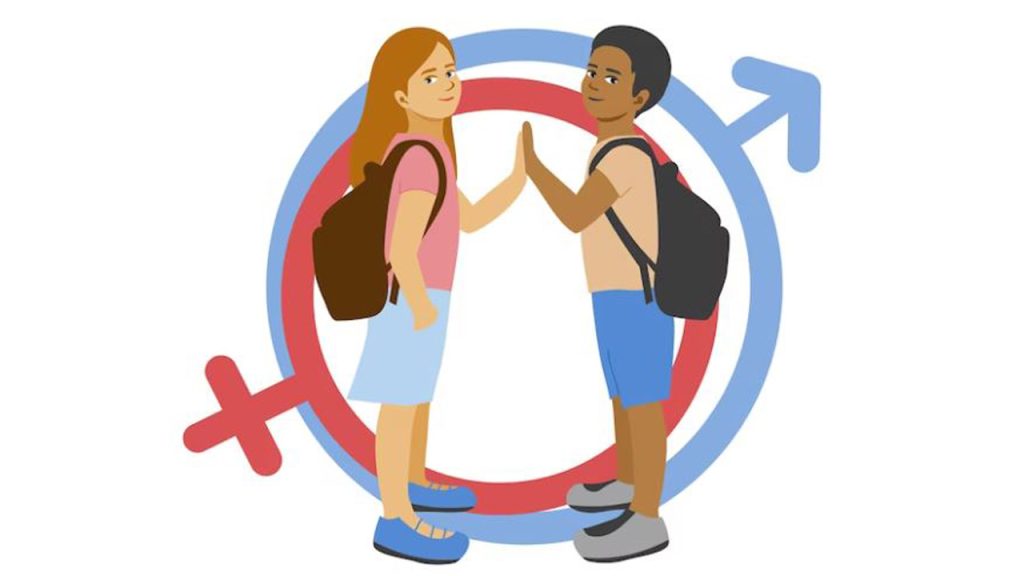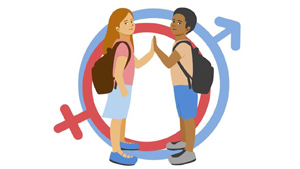Gender equality in education is a concept that has gained significant attention in recent years. It refers to the equal access to educational opportunities and resources for individuals of all genders. This means that both males and females should have the same chances to acquire knowledge, develop skills, and pursue their educational aspirations without any form of discrimination or bias.

Image by freepik
Importance of gender equality in education
Achieving gender equality in education is vital for several reasons. First, it enables societies to harness the full potential of all individuals, regardless of their gender. Education plays a crucial role in empowering individuals and equipping them with the knowledge and skills needed to thrive in their personal and professional lives. When access to education is limited based on gender, it not only hinders individual growth but also holds back progress at a societal level.
Gender equality in education positively impacts economic development and social stability. Studies have shown that societies with higher levels of gender equality in education experience lower rates of poverty, improved health outcomes, and increased political representation of women. By providing equal educational opportunities, we can break the cycle of gender inequality and create a more equitable and prosperous society.
Gender disparities in education
Despite the progress made in recent years, gender disparities in education still persist in many parts of the world. Girls, in particular, face numerous barriers to accessing quality education. Discrimination, cultural norms, poverty, and early marriage are some of the factors that contribute to these disparities. In some societies, girls are expected to prioritize household chores and marriage over education, limiting their opportunities for personal and professional growth.
Boys, on the other hand, may face different challenges in education. Gender stereotypes and societal expectations can discourage boys from pursuing fields traditionally associated with women, such as nursing or teaching. This limits their choices and perpetuates gender biases in the workforce.
Factors contributing to gender disparities in education
Several factors contribute to gender disparities in education. One significant factor is poverty. In many low-income countries, families struggle to afford the costs associated with education, such as school fees, uniforms, and textbooks. When resources are limited, families often prioritize the education of boys over girls, perpetuating gender inequality.
Cultural norms and stereotypes also play a role in perpetuating gender disparities in education. In some societies, girls are seen as caregivers and future wives, while boys are expected to be breadwinners. These gender roles can limit the educational opportunities available to girls and reinforce gender biases.
Lastly, inadequate infrastructure and lack of resources in schools can further exacerbate gender disparities. Schools with poor facilities and limited resources are less likely to attract and retain students, particularly girls. Without access to safe and supportive learning environments, girls are more likely to drop out of school or not enroll at all.
Initiatives promoting gender equality in education
Fortunately, numerous initiatives and organizations are working towards promoting gender equality in education. These initiatives aim to address the underlying causes of gender disparities and create equal opportunities for all individuals. One such initiative is the United Nations Girls’ Education Initiative (UNGEI), which works to improve girls’ access to quality education globally.
Another initiative is the Malala Fund, established by Nobel laureate Malala Yousafzai. The fund advocates for girls’ education and supports projects that empower girls through education. Through scholarships, advocacy, and partnerships with local organizations, the Malala Fund is making a significant impact in promoting gender equality in education.
Additionally, governments and policymakers play a crucial role in promoting gender equality in education. By implementing policies that prioritize equal access to education and addressing the underlying causes of gender disparities, governments can create an enabling environment for gender equality in education.
Strategies for achieving gender equality in education
To achieve gender equality in education, a multi-faceted approach is needed. Firstly, it is essential to address the underlying social and cultural norms that perpetuate gender biases in education. This can be done through awareness campaigns, community engagement, and targeted interventions that challenge gender stereotypes.
Secondly, providing financial support to families and individuals can help overcome the barriers associated with poverty. Scholarships, grants, and subsidies can make education more accessible and affordable for marginalized individuals, including girls.
Improving infrastructure and resources in schools is another critical strategy for achieving gender equality in education. This includes ensuring that schools have adequate facilities, such as classrooms, libraries, and sanitation facilities, to create a conducive learning environment for all students.
Lastly, capacity building and training programs for teachers can contribute to gender equality in education. Teachers play a vital role in shaping students’ attitudes and beliefs, and providing them with training on gender-responsive teaching practices can help create an inclusive and equitable learning environment.
Benefits of gender equality in education
Gender equality in education brings numerous benefits, both at an individual and societal level. When individuals have equal access to education, regardless of their gender, they can reach their full potential and contribute to society in meaningful ways. This leads to economic growth, improved health outcomes, and increased political representation of women.
Studies have shown that societies with higher levels of gender equality in education experience lower rates of poverty and improved socio-economic development. When women have access to education, they are more likely to enter the workforce, earn higher incomes, and invest in their families’ well-being.
Gender equality in education promotes social stability by challenging traditional gender roles and stereotypes. It fosters a culture of inclusivity and respect, where individuals are valued for their abilities and contributions, rather than their gender.
Challenges and obstacles to achieving gender equality in education
While progress has been made, several challenges and obstacles persist in achieving gender equality in education. One of the significant challenges is the lack of investment in education, particularly in low-income countries. Limited resources and competing priorities often result in inadequate infrastructure, overcrowded classrooms, and a lack of qualified teachers, hindering efforts to achieve gender equality.
Cultural and societal norms also present significant obstacles. Deep-rooted gender biases and stereotypes can be difficult to overcome, as they are deeply ingrained in societies. Addressing these norms requires sustained efforts and collaboration between governments, communities, and civil society organizations.
Armed conflicts and humanitarian crises can disproportionately affect girls’ access to education. In conflict-affected areas, schools are often targeted, and girls are at risk of violence and exploitation. Ensuring safe and inclusive learning environments in these contexts is a complex challenge that requires coordinated efforts from multiple stakeholders.
Case studies of successful gender equality initiatives in education
Several case studies highlight successful initiatives promoting gender equality in education. One such case is Rwanda, where the government has made significant progress in reducing gender disparities in education. Through targeted policies and investments, Rwanda has achieved near gender parity in primary and secondary education, with girls outperforming boys in some subjects.
Another case study is Bangladesh, where the government’s commitment to girls’ education has resulted in significant improvements in enrollment rates and retention. Bangladesh has implemented various initiatives, such as stipends for girls’ education and community mobilization programs, which have contributed to narrowing the gender gap in education.
These case studies demonstrate that with political will, targeted interventions, and collaboration between stakeholders, gender equality in education can be achieved.
The way forward for gender equality in education
Gender equality in education is an essential aspect of creating a fair and inclusive society. By providing equal access to educational opportunities, we can pave the way for a brighter future, where individuals of all genders can reach their full potential.
To achieve gender equality in education, it is crucial to address the underlying causes of gender disparities, such as poverty, cultural norms, and inadequate resources. Governments, policymakers, and organizations must work together to implement policies and initiatives that promote equal access to education for all individuals.
Changing societal attitudes and challenging gender stereotypes are key to achieving lasting change. By promoting inclusivity, respect, and equal opportunities in education, we can create a society where individuals are valued for their abilities, not their gender.
The journey towards gender equality in education may be challenging, but the benefits are undeniable. It is not only a matter of justice and human rights but also a catalyst for economic development, social stability, and overall well-being. Let us continue to strive for a world where every individual, regardless of their gender, has the opportunity to learn, grow, and thrive.




